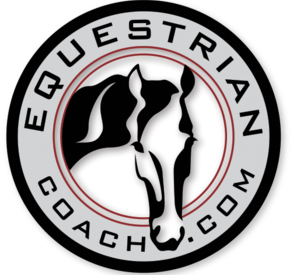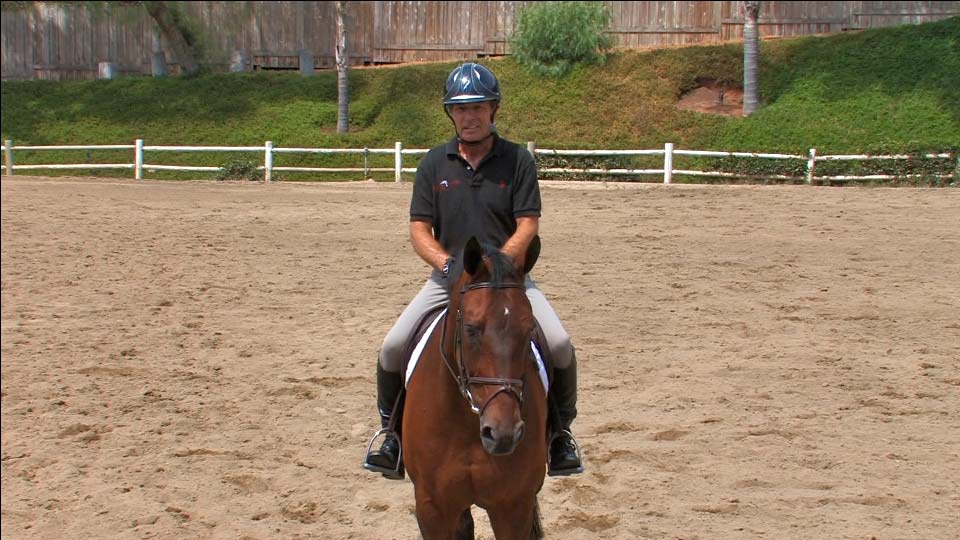Geoff Teall
- 27 Jun, 2018
- 0 Comments
- 5 Mins Read
Horse or Rider—Who’s in Charge?
Submitted by member: Sarah
I want to preface this by saying that I am in a full-training program but I’m of the opinion that having multiple perspectives can be extremely beneficial!
I’m an amateur re-rider who has fulfilled her life-long dream of buying a young prospect. My just turned six-year-old warmblood gelding is very talented and very smart. He is ridden by a professional 2-3 times a week, and I ride him the rest of the days, three of those days in lessons. Sometimes I get on him and I feel that he is testing me and “has my number.” If it’s “one of those days,” he wants to hang out with the “herd” in the middle of the arena and will start to pay attention to everything BUT me, and, most annoyingly, he’ll go dead to my outside leg, stop dead in his tracks, and refuse to go forward. While I take comfort in the fact that he never does anything too naughty (it’s more of an annoyance factor), it can still be intimidating to me. Of course, when the pro gets on him – not a problem! Perfect behavior! In fact, sometimes I think the problem is exacerbated the more the professional rides him. It’s almost as if he is more acutely aware of the difference between the professional and his amateur.
Here’s my question: How do I begin my ride and establish who’s in charge without causing a big scene and continue to ensure his attention is on me the entire ride (even when I get tired and need to take a walk break, which, I’ve noticed, is usually when the trouble begins. I wish I could do my entire ride without really taking a break, but as a working amateur who gets out of breath from time to time, it’s just not possible). He is a young horse and I want him to be happy and healthy and I don’t want to “fry” his brain, but at the same time, he is a working animal and has a very, very, very nice life—he has a job to do and that is to be an amateur’s horse. I want to add that I am a capable rider with a strong base. I do not believe he is too much horse for me.
Answer by Geoff Teall
I appreciate your question, but it is not an easy one to answer long distance. I think we are best served if I just outline some basic training principles I use and let you work out possible solutions with your trainer.
Punishment and Reward. The basic principle we use to train horses (and their riders if truth be told). Basically, as trainers, we need to come up with some sort of aid that elicits the response from our horse that we would like, and then reward that response by discontinuing that aid.
“If you are not sure if you got a response from the horse, you probably did not.”
“If you did get the response you wanted, reward that response by relaxing the aid.”
“If you did not get the response you were looking for, you are no longer looking for a response, but instead you are now looking for an over response.”
“After you reward the response by relaxing the aid, ask with a little bit less the next time you ask for the same reaction.”
“The response should not be any response, but instead the appropriate response, or the response that you intended.”
So taking these principles to your issue, as a trainer, I would arrive at using the cluck and the stick. The stick (coupled with the cluck) is a very powerful training aid. The idea is simple: use the cluck simultaneously with the stick behind your leg. In theory, this will teach your horse to respond to the cluck by moving forward. Here’s the trick, if there is any, use the cluck and the stick (behind your leg) at exactly the same time. If you know you got a response, you can relax, reward your horse, and you are done. If you are not sure if you got a response, you did not. If you do not get the response you want, you have have to repeat the exercise with increasing strength until you do get the desired response and you are able to reward the horse by no longer asking him to go forward by using the stick. The only appropriate response is to go forward willingly. If he raises his head, pins his ears, swishes his tail, or kicks out, although these are definitely responses, they are not appropriate responses, so you have to repeat until the response is appropriate—moving forward willingly.
Start this exercise at a gait in which you are comfortable. Often this will be either standing still or at the walk. Once you understand your horse’s reactions to the stick, you can use it in any situation that you need it. Remember that ultimately you want your horse to react by moving forward willingly from using only the cluck. The stick is used only to get him to be responsive to the cluck. The cluck is better because you can use it in the show ring, but more importantly, you can keep both hands on the reins when you are using the cluck which is safer.
If you go back to your basic training principles, enlist the help of your professional, and both of you remain creative with your training, I am sure you can get your horse through this phase. Remember to keep it simple!
More Learning
For more blog topics on similar issues click on the links below:
Troubleshooting: Getting Your Horse In Front Of Your Leg by Geoff Teall
Troubleshooting: Kicking Out at the Trot and Canter by Bernie Traurig
Video Recommendations:
Getting And Keeping The Dull Horse In Front Of Your Leg
Bernie Traurig
Is your horse dull to your leg? Are you constantly nagging your horse with your spur? Are there worn patches on your horse’s side from heels that are constantly asking for forward momentum? Bernie has the solution.
Running Time: 15 minutes and 8 seconds
Controls Of The Horse Part Two – Leg Aids
Bernie Traurig
Bernie illustrates, for all the basic jumping disciplines, the significance of the correct position & timing of leg aids as a powerful blend with the rein aids. Teaching independent and prompt responsiveness to leg aids will result in clear, effective communication with your horse when used in conjunction with the rein aids for ultimate control in the ring.
Running Time: 35 minutes and 43 seconds
Have Something You Want to Ask Our Panel of Experts?
Ask The Experts is the ultimate way to get help from the top professionals in the equestrian industry without leaving the comfort of your home. This service is available to Monthly, Annual, and Lifetime Members of EquestrianCoach.com.



